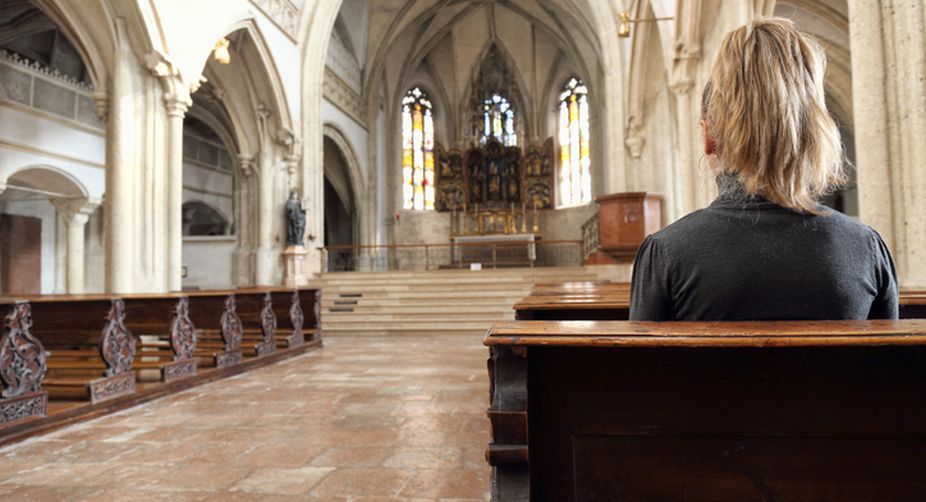Namesakes, more often than not, can reveal interesting connections. The fairly recent celebration of the feast of Our Lady of Good Health at the Masihgarh Church, where a statue of the Virgin Mary is taken out with great solemnity after a nine-day novena, reminded one of the countless women named after Christ’s mother, whose Jewish name was actually Mariam. It continues to be a common name among Jews, Christians and Muslims too.
Mariam Zamani was the title enjoyed by Akbar’s Rajput wife, which led to the erroneous belief that she was a Christian. Her maqbara(tomb) is situated opposite the emperor’s own tomb at Sikandra. Mariam Piyari was the saintly woman, who was granted a mango orchard by the emperor for a Christian cemetery. It is now known as Martyrs’ Cemetery because of the grave of Padre Santus, a 17th century Portuguese priest, which is revered by all communities, and of a dozen others martyred along with him by fanatics.
Advertisement
Pahar-ki-Mariam was the woman who haunted Paharganj bridge before the New Delhi Station was built and Mariam Begum was the one who was seen walking up and down from Jama Masjid Chowk to the overhead Daryaganj bridge (now demolished). She was always in a hurry, all dressed up as though trying to catch a train.
Begum had a bag slung on her shoulder, along with a thermos flask full of tea. Sometimes at night, she was waylaid by vagrants, who molested her but she was back on her beat in the morning.
A comely woman despite her 60-odd years, Begum was said to belong to Quetta that was devastated by an earthquake long before the Partition and in which her husband, children and other relatives had been killed, along with thousands of others, including the wife of an Anglo-Indian teacher, whose dress was always kept hanging in the schoolmaster’s bedroom as a reminder of the tragedy. It seems Mariam Begum was in a hurry to get away from the city thinking that another catastrophe was about to overtake her.
One fine day she disappeared, probably having succeeded in catching the train that had been long evading her, or fell victim to a murderous vagrant. Like Begum, there was Mariam Pagli, who wandered about uttering only four words, “Devaria bula rahe hain”. It was conjectured as a reference to her brother-inlaw, whom she had married after the death of her husband but who later ditched her, resulting in Mariam losing her mind. At that time the film Pagli was making waves in the cinema halls of Delhi and street urchins trailing Mariam would think they were teasing the film heroine. Pagli would cook her meals in a discarded commode and sleep under a roadside tree to resume her trek in the morning. Where she disappeared after 20 years is not known.
And who can forget Jennifer Kendal in the film role of Mariam of Shahjahanpur? But perhaps the most interesting of such women was Sunny-ki-Mariam, a convert who married a defrocked Franciscan priest. Sunny Domingo belonged to the family that once owned Masigarh area, where its early 19th century head, Mrs Domingo gave her ancestral land, granted by the latter Mughals to Bibi Juliana of the court of Aurangzeb. Sunny-ki-Mariam would cause quite an uproar in the Christian locality with word going around, “Mariam khel rahi hai”. This was an allusion to the periodic fits she would get and behave like a Maenad, shaking her head violently and flaying her arms and legs. In this state she also cursed and made predictions, which surprisingly enough came true. Sunny looked askance at such incidents, keeping busy with his coaching classes, which were highly popular with students as he was very fluent in Latin and English, besides mastery over mathematics.
Mariam had borne him three sturdy sons, who became good footballers, and a very pretty daughter. Her neighbours attributed her fits to the influence of “alien gods” as she bore weird tattoo marks on her forearms, nose and temples, which made many describe her as “Guddi hui”.
Sunny was also popular with the ladies and they always sought him out whenever an “Obatana” (the dabbing withhaldiand chandan paste) was held after it had been applied on a bride in an age when fairness creams were still not in vogue.
The excited women would try to catch him unawares and when he managed to escape being smeared, set up a chorus of “Sunny Sahib-ki-Lulu”.
The word “Lulu” gained currency after Mirza Jahangir, Bahadur Shah Zafar’s younger half-brother, used it to taunt Charles Seton while trying to shoot the British Resident at the Red Fort as he had rejected his father Akbar Shah’s request to make him heir apparent in preference to Zafar.
Another strange practice of Sunny-ki-Mariam was plastering her courtyard with cow dung and mud paste every Thursday, saying Mother Mary would come visiting at midnight. She also kept a candle burning and a vessel full of pulao ready for her to eat (sic).
When Mariam died there was an earthquake but her husband and children escaped miraculously after their house collapsed. All this came to mind when Our Lady’s feast was observed recently, but there were only a few who remembered the mercurial Sunny-ki-Mariam ~ buried near Father Santus’ chapel in Agra. Her daughter Mariam Rose used to visit acquaintances with the plea that they buy a secondhand table, chair or sewing machine as her father Sunny was in straitened circumstances after stopping coaching students because of failing eye-sight. She was always sent away with some excuse or the other by the many Aunties and Buas she visited at lunch time.
Sometimes they offered her a plate of dal and rice so that she would not go on insisting on a bargain sale. One day Mariam Rose went to the house of an “Aunty” residing some distance away. She was not at home and only Mrs D’Costa 20-year-old son was sitting in the drawing room awaiting her return and playing patience for lunch.
When Mary Rose knocked on the door he opened it thinking his mother had come. Instead he saw a pretty girl, who wanted to sell something. The boy kept her hopes alive.
When Mrs D’Costa finally returned she was naturally surprised to see her son Benny and the girl getting cosy. Benny recovering his wits, pleaded that his mother buy the table Mary Rose wanted to sell. To please him, more than her, she agreed. The intimacy between the two grew and finally they got married.
Benny D’Costa and Mariam Rose migrated to Australia and by the time they returned with three children, Sunny Domingo was dead and the young couple couldn’t trace the grave of SunnyKi-Mariam in Agra as it was a mud one and demolished to make way for other burials. But before they left they made a handsome donation to the church for the upkeep of neglected graves, with no descendants to look after them. Incidentally, Mariam Rose also happened to be a namesake of the Virgin Mary, whose feast is celebrated on 8 September every year.











